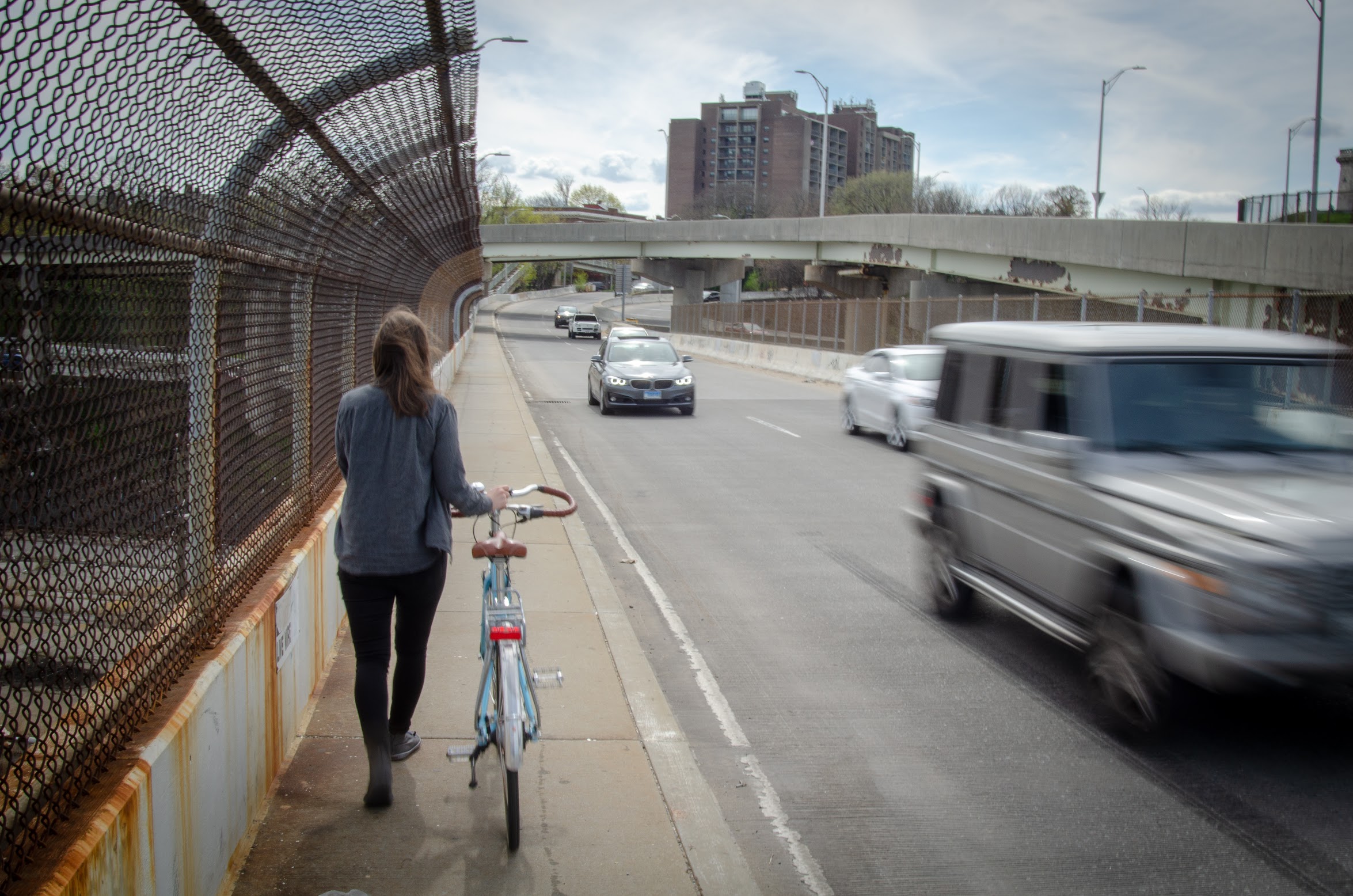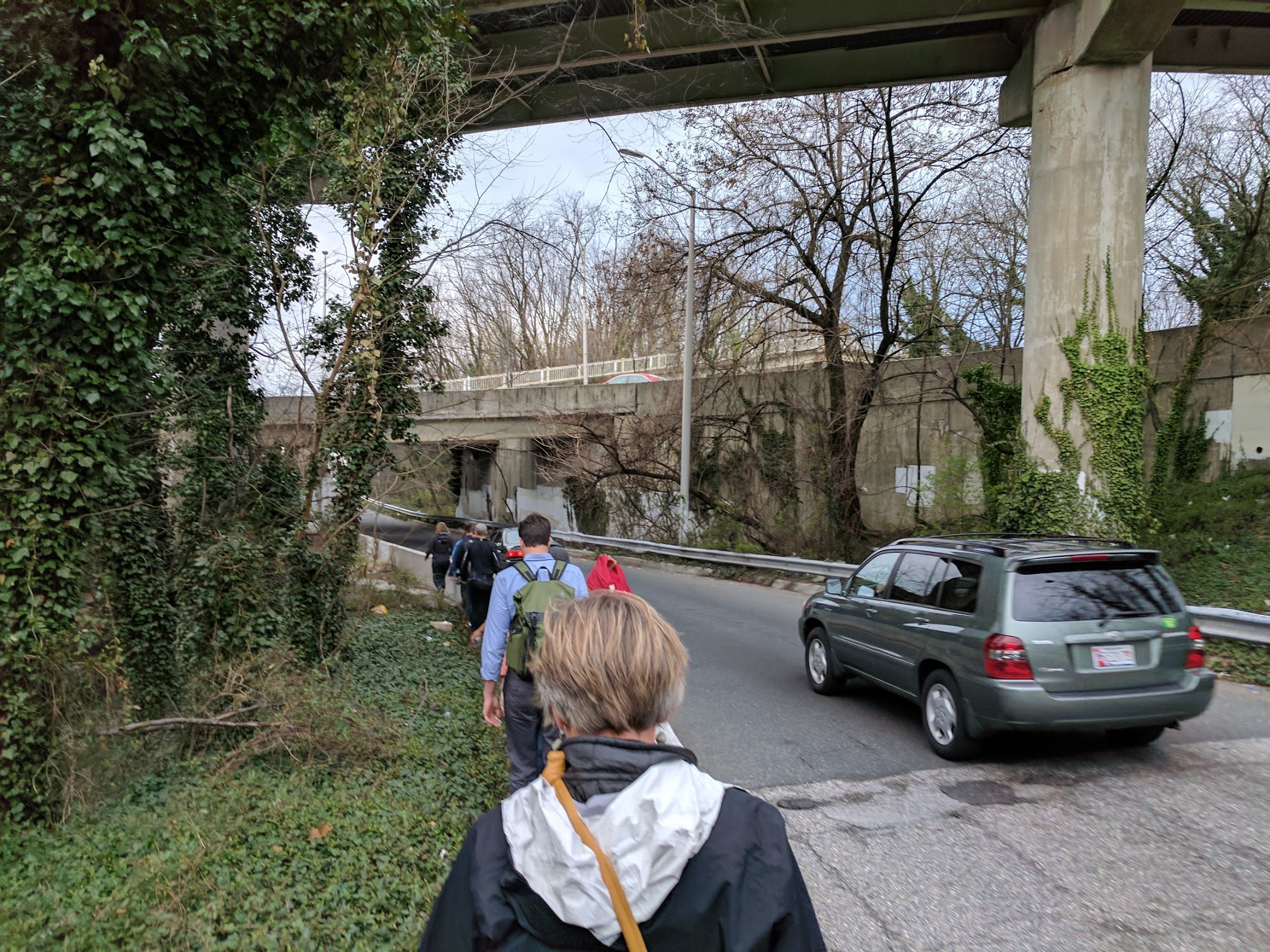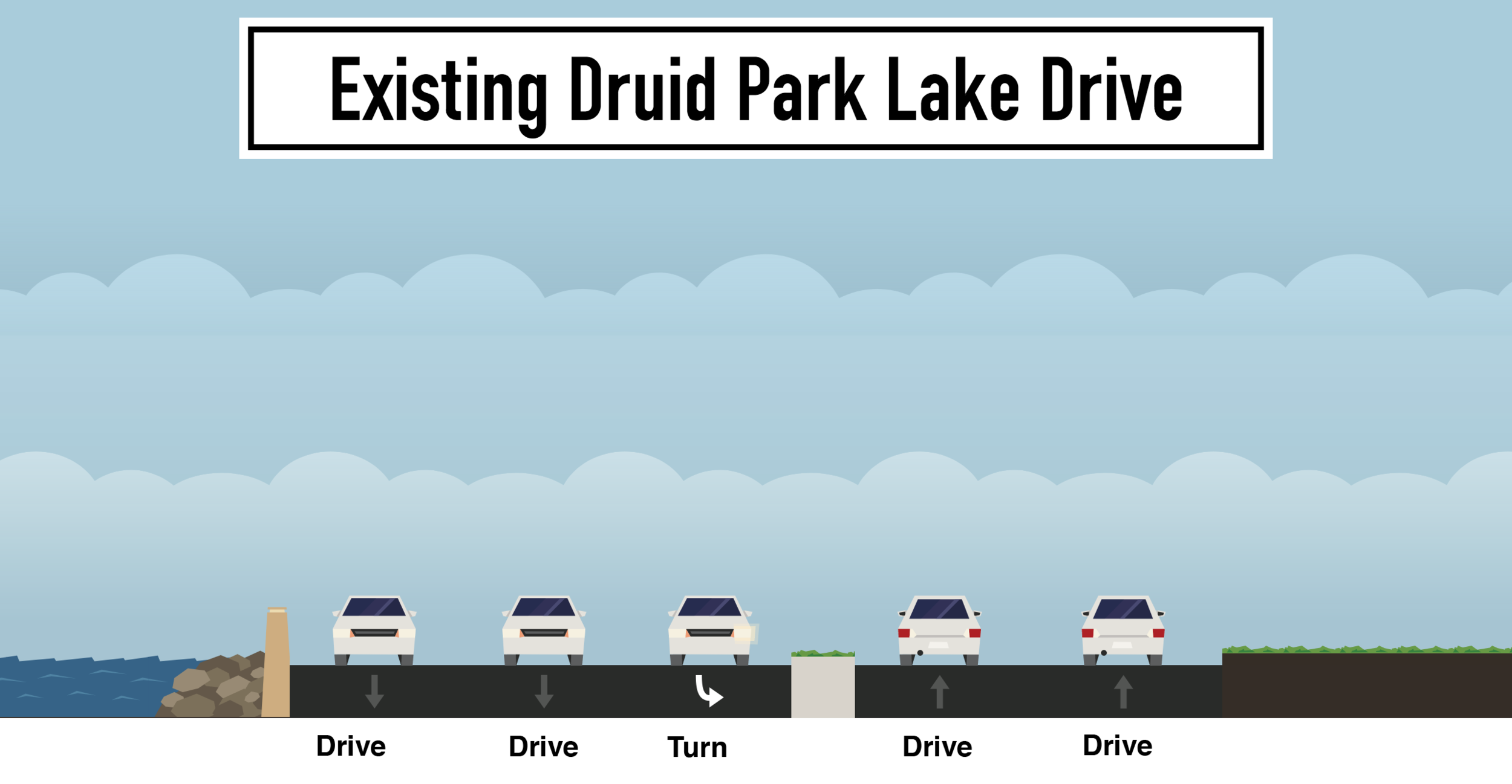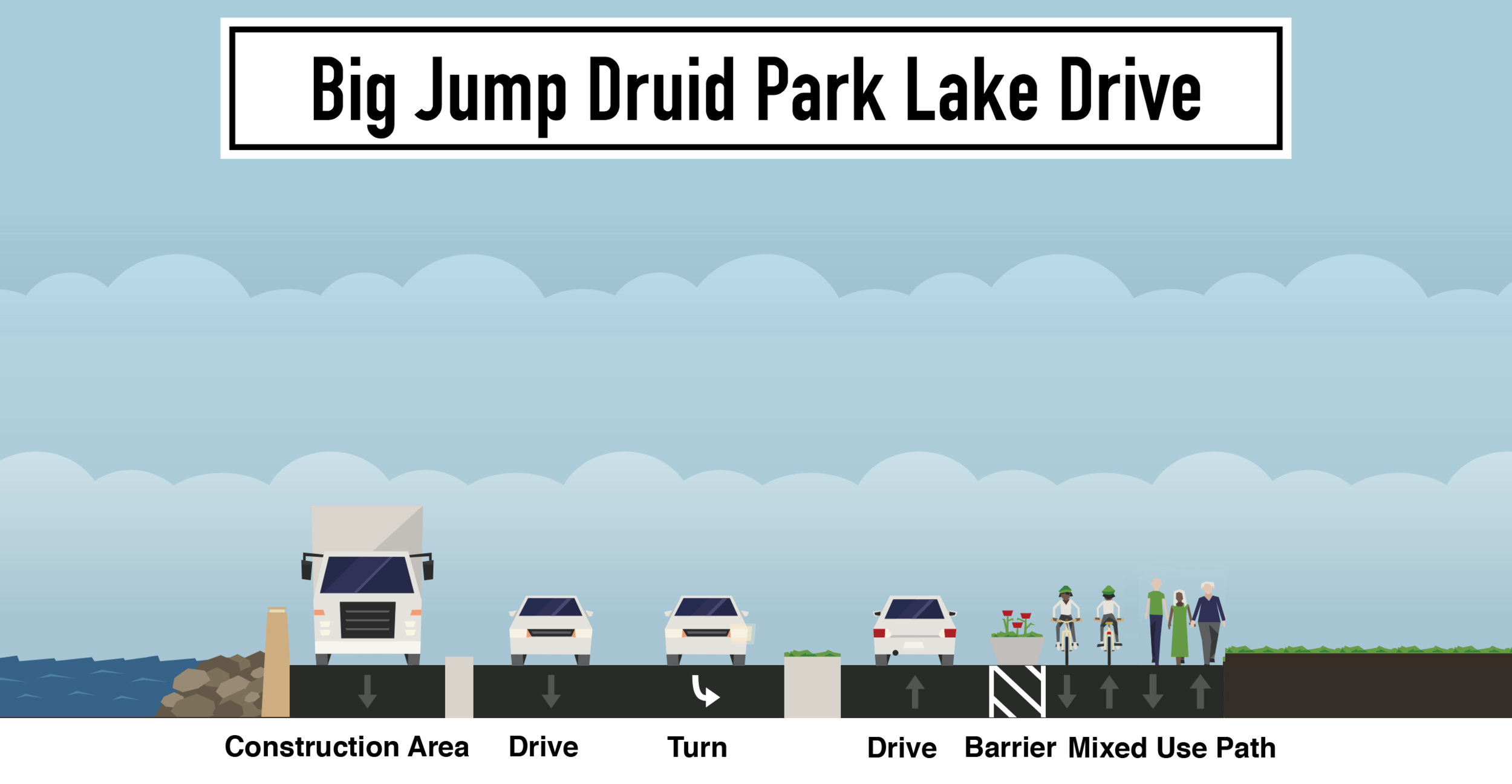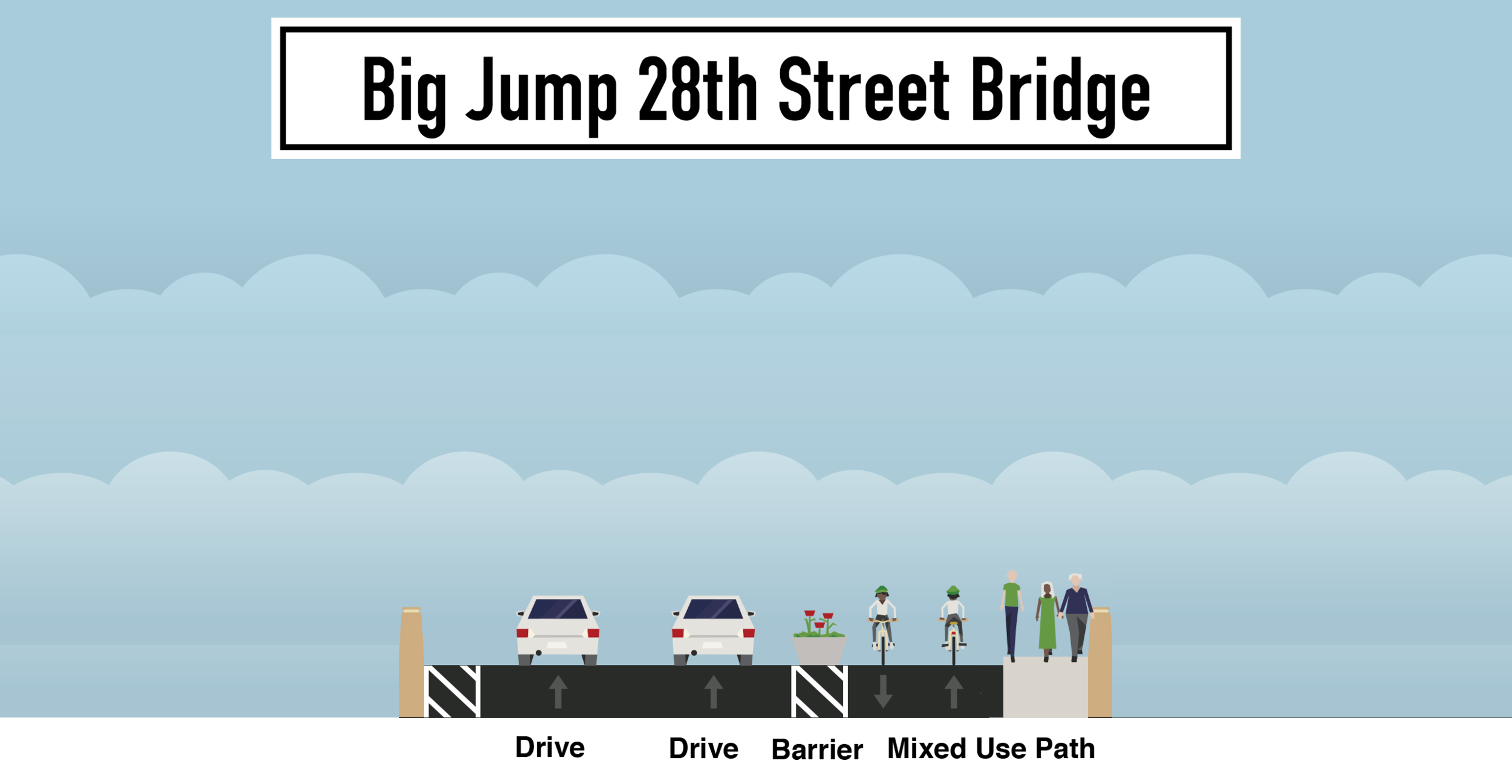#IBikeIVote is designed to help you make the best decision at the ballot box. Voting local is the single most important thing you can do to make Baltimore a more livable city.
For the 2018 Primary Election on June 26th, Bikemore put out a candidate questionnaire to all primary candidates,asking about their priorities and visions for transportation in Baltimore.
41st District Candidates Responding:
Tony Bridges, Delegate
Richard Bruno, Delegate
Angela C. Gibson, Delegate
J.D. Merrill, Senate
George E. Mitchell, Delegate
Sean Stinnett, Delegate
MULTIPLE CHOICE
Maryland’s urbanized areas have limited space on streets, and some modes of transportation must be prioritized over others to make the most of this limited space. Please rank the below modes of transportation in order of importance:
The State of Maryland should incentivize smart growth via infill development, transportation oriented development, and adaptive re-use. Greenfield development should receive no state subsidy, and greenfield developers should pay the full share of any road, septic, stormwater, or sewer upgrades necessary for development.
Historically, regional transportation planning in Maryland has been structurally racist.
The State of Maryland should conduct an equity gap analysis and disparity study of transportation investment over the past 75 years, comparing investment in private automobile travel and public transportation, biking, and walking, including analysis of where these investments were made based on race and income levels.
The Baltimore Metropolitan Council and Baltimore Regional Transportation Board should include racial equity as a main outcome in all regional planning initiatives.
Data shows that expanding roadways induces demand on that roadway, negating the benefits of the roadway expansion. The State of Maryland should stop expanding highways and rural/suburban roadways, and instead divert that money to proven methods of shifting mode away from private automobile use.
The Maryland Transit Administration should immediately conduct an updated regional transit needs assessment and capital needs inventory. The needs identified should be prioritized for full funding, even if it means delaying or canceling planned road expansion projects.
The Maryland Transit Administration should update the 2002 Regional Rail Plan with a new regional transit vision, and projects identified within should be prioritized for full funding, even if it means delaying or canceling planned road expansion projects.
The MARC Growth and Investment Plan, delivering weekend service on all MARC lines, expansion to Wilmington, DE, and high-frequency express service between Baltimore and Washington should be prioritized for full funding, even if it means delaying or canceling planned road expansion projects.
The Maryland Department of Transportation should adopt a progressive Complete Streets approach, mandating all urban and suburban roadways under their control prioritize safety for people walking and biking over throughput for automobiles. These roadways should be retrofitted with ADA accessible sidewalks and low-stress, all-ages bicycle infrastructure, even if that means reducing roadway throughput for private automobiles.
Many zoning codes in urban areas require one parking space per new dwelling unit. This is:
Some cities have removed minimum parking requirements from their zoning code entirely, allowing the market to determine how many spaces of parking are needed in a new building. Local urban jurisdictions in Maryland should remove minimum parking requirements.
Some cities have instituted maximum parking requirements in their zoning codes, capping the amount of parking that can be constructed in a new building. Local urban jurisdictions in Maryland should enact maximum parking requirements in certain zoning areas.
Some cities mandate that the cost of parking be separated from apartment rent. This incentivizes living car free, and lowers the total cost of housing. The State of Maryland should mandate unbundling parking costs from housing.
Some cities require employers that subsidize parking also offer an option for employees to receive that subsidy as a cash payment. The State of Maryland should mandate parking cash-out.
Urban jurisdictions in Maryland should allow taller, denser, or larger buildings in areas they are now prohibited by zoning if that increase results in more affordable housing units.
Urban jurisdictions in Maryland should allow large residences to be split into apartments, increasing density in neighborhoods that were traditionally single family homes.
Speeds are too high on urban streets. In urbanized areas, Maryland should enforce a maximum speed limit of 25 mph on arterial streets, and 20 mph on local streets.
Automated Speed Enforcement Cameras are proven to reduce fatal collisions. These cameras should be able to be used on any street, not just near schools and construction sites.
The Automated Speed Enforcement Camera threshold is too high. Cameras should be able to issue citations for those traveling 5 miles per hour or more over the speed limit.
SHORT ANSWER
Do you use a bicycle for transportation? If so, for what purposes and how often, and what was your last trip by bicycle?
Tony Bridges: Yes. I ride recreationally by myself and with young children, ages 9 and 11. My last ride was with my children approximately a month ago. As I complete this survey, there are calls for snow showers!
Richard Bruno: Yes, in my previous job I bike commuted everyday, these days I bicycle about once a week, especially to get around my neighborhood. I was on my bike today.
Angela C. Gibson: Yes, I use my bicycle for personal exercise when time permits. No recent trips.
J.D. Merrill: I do not use a bicycle for transportation. My bicycle is primarily used for exercise. It is currently on a trainer stand in my home office to provide exercise during the winter months. My primary method of transportation is a zero emissions 2017 Chevrolet Bolt.
George E. Mitchell: No
Sean Stinnett: Yes. I use my bike to travel throughout my neighborhood (West Arlington) to check on my neighbors. I'm president of the association and I do this 2-3 days of the week. This issue is one of the reasons why I have Christopher Ervin as part of my team to assist in addressing the bike issues.
Do you use public transportation? If so, for what purpose and how often, and what was your last trip by public transportation?
Tony Bridges: Yes. Unfortunately, as you know, Maryland does not have a state-of-the-art public transportation system, and, accordingly, my trips on public transportation are limited. I would like to change this! Our underfunded and limited public transportation system hurts my future constituents, who, unlike me, may be completely dependent on using public transportation for their livelihood. My last trip was taking the Maryland's lightrail to see the Ravens.
Richard Bruno: Yes, I use public transportation (bus) about once a week, often to get to work. My last trip by public transportation was a couple weeks ago.
Angela C. Gibson: Yes, I have utilized public transportation for my transportation needs for professional and personal use.
J.D. Merrill: I rarely use public transportation, when I have used it is has been to get home from work on the bus, attend an Orioles game via Light Rail, or get around downtown on the Charm City Circulator. I last used public transportation in November 2017 when I took the bus home from work.
George E. Mitchell: No.
Sean Stinnett: Yes. I use the metro & light-rail 2-3 per week coming and going to and from work and to my daughter's school (The Mount Washington School).
Do you agree with the 2015 Baltimore Bicycle Master Plan and 2017 Separated Bike Lane Network Addendum recommendations, and if so, what budgetary or policy commitments would you make to help Baltimore close its 47 lane mile construction deficit and achieve the yearly 17 mile construction milestones?
Tony Bridges: Yes, I support the Baltimore Bicycle Master plan; I would need to study the 2017 recommendations.
Richard Bruno: Yes, I strongly agree with the 2015 Plan and the 2017 Addendum. At the state level, I will champion a vulnerable road user law, a safe passing law, increased funding for the Maryland Bikeways Program, and, especially statewide complete streets legislation. I am a strong admirer of the advocacy of Councilman Ryan Dorsey and Delegate Robbyn Lewis for complete streets, and I will be a legislator in their mold.
Angela C. Gibson: I agree with both plans and recommendations. In order to finance I support acquiring local funding and grants from State and Federal Governments.
J.D. Merrill: I agree with both of these plans. Increased bike use is a relatively inexpensive and environmentally conscious way to improve transportation in Baltimore and other Maryland cities. Baltimore needs better signage and facilities on almost all of its streets but the most effective short term investments would be separated lanes on major streets that would allow bicycle traffic to cross and flow with major streets. At the state level I will work to increase state assistance for bike facility construction all over the state.
George E. Mitchell: I need more information to make a positive determination about this question.
Sean Stinnett: Yes I support and support the Greenway proposition that is proposed for Baltimore.
What are the biggest barriers to mode shift (getting people to choose walking, biking, or public transit instead of personal vehicles), and what should Maryland and Baltimore City do to address these impediments?
Tony Bridges: One of my primary goals as State Delegate is to encourage and strengthen economic development opportunities in the 41st. To this end, I have consistently for the last fifteen years in my professional life advocated for transit-oriented development, and I will continue to do so once elected.
Richard Bruno: The biggest barrier to mode shift is that the infrastructural capacity of the city is constrained by bad policy decisions at the state level (e.g., the recent cancellation of the Red Line and implementation of the CityLink bus “reform”), and the simple fact that the city’s roads are designed to accommodate commuters, many of whom live in the county. The one-third of Baltimoreans who do not own a car, who more often than not commute within the city (rather than between the city and the suburbs), and who tend to be low-income and black—these Baltimoreans are not considered when road infrastructure designs are made. I work in a clinic serving the uninsured population, and I can tell you that many of my patients have seen their commutes double or even triple with the implementation of the CityLink cuts.
Angela C. Gibson: We need to minimize subsidizing personal vehicles and parking garages over smart growth and utilize public transportation and alternative transportation alternatives such as bicycles.
J.D. Merrill: The biggest barriers to mode shift are the lack of complete streets, neighborhood development that serves residents, the real and perceived dangers of biking, and a disjointed, disconnected, unreliable and inefficient transit system. At the state level we have to help local government transition to complete streets, make dedicated bike lanes safer, and improve our public transportation system.
George E. Mitchell: The biggest barrier to mode shifting is safety. No matter if you are walking, riding a bike or on public transportation you are concerned for your safety. It is important to make sure people are safe by having plain clothes officers ride the public transportation system.
Sean Stinnett: Urban planning should be around walking, biking and public transportation. Maryland and Baltimore City need to accommodate these modes of transportation first and make it more appealing to the public than personal vehicles.
Describe your vision of a healthy, safe, equitable transportation system for Baltimore City and the roles walking, biking, and public transportation play in that vision.
Tony Bridges: My vision for a healthy transportation system includes seeing my son and daughter riding bicycles to the park, my neighbors being able walk the streets unimpeded and unafraid, and my relatives being able to easily access public transportation to get to their jobs in way that is affordable and efficient.
Richard Bruno: A healthy, safe, and equitable transportation system for Baltimore City would include implementing bus rapid transit, expansion of the rail system (going beyond just building the Red Line to constructing the 5 or 6 lines the city needs), bike paths throughout all the main roads of the city (and not just those in the white L), and in general making transportation by means other than personal car possible and pleasant for people trying to get to any part of the city. The residents of Baltimore deserve a public transportation system which is of a high enough quality to compete with ride-sharing and personal driving, and walkable, bikeable, livable streets. Taking cars off the streets has to be a priority for reasons of social justice, public health, and environmental transition.
Angela C. Gibson: Baltimore City must embrace a viable transportation network which levels the playing field between personal vehicle transportation and walking, biking, and public transportation. Only when we embrace smart growth and transportation options that all residents can easily access will we have a City where economic and personal health is not exclusively tied to what neighborhood you reside.
J.D. Merrill: My vision for a complete transportation system in Baltimore City relies much more heavily on public transportation and cycling than the current city does. I envision a city that has a modern Bus Rapid Transit (BRT) system that provides reliable, fast transit along Baltimore’s major corridors, fed by neighborhood lines that get riders to main lines quickly. The city and transportation system should also be substantially more bike friendly. Cycling is healthy for individuals, healthy for the environment, and reduces traffic congestion. A city with a completed Bicycle Master Plan paired with an efficient transit system would be a better city. Automobiles, while hopefully mostly electric in the future, will always play an important role in Baltimore’s transportation system. We also need to work to reduce automobile speed on many streets not only for the safety of cyclists but also for the drivers themselves. Lastly, in dense residential and commercial areas the city should encourage walking as much as it can. Making entire streets walkable should be seriously explored for Baltimore.
George E. Mitchell: A healthy, equitable transportation system involves making sure the bike lanes are big enough so there is no concern about cars hitting bikers being hit. The sidewalks should remain free from cars and debris so people can walk freely without having to get in the street because of an obstruction. Public transportation needs to make sure the bus stops are well lit and secure for people who have to wait at them for the bus.
Sean Stinnett: Walking enhances the nature of small business in the community. When there is biking infrastructure, individuals can travel to neighborhood to neighborhood and can avoid common expenses like parking. Some areas individuals are unable to get to but biking and/or equitable transportation could accommodate.
How does transportation fit in your overall plan for a healthy and economically thriving Maryland? Explain your transportation philosophy.
Tony Bridges: My philosophy on transportation is that Marylanders are better with better transportation options. Studies show that long commutes limit economic opportunities. When projects and policies around transportation are aligned, communities thrive which is why I continue to advocate for transit-oriented development in our neighborhoods. Communities and opportunities should be connected with shorter commutes to places where we live, work, and play. Any new development should also focus on amenities for a more walkable and bikeable community. Walkable communities have health, environmental and economic benefits.
Richard Bruno: Every US city with a thriving economy has a world-class public transportation system. Baltimore must improve its transportation system as a means of economic empowerment for its residents. Public transportation and biking can only be expanded, and freeways can only be removed, with the expenditure of public money and the employment of laborers. So, there are solid Keynesian reasons for infrastructure projects not only in terms of transportation, but also in terms of lead pipe removal, environmental initiatives, school construction, and upgrading of our dilapidated sanitation system.
Complete streets means job creation. Moreover, reducing driving would lower asthma rates by keeping particulate matter out of the air (and would improve the lives of hundreds of my patients who suffer with preventable asthma), helping Baltimore lower its carbon emissions (transportation is the largest single source of emissions nationwide), and lowering the cost of transportation, putting money in the pockets of working families.
My transportation philosophy is that residents have a right to the city: they have a right to move affordably and comfortably from A to B in pursuit of employment, education, and socialization. As long as personal finances remain a determining factor in an individual’s access transportation, they cannot be said to be free, and they remain cut off from opportunities accessible to others in the city and suburbs.
Angela C. Gibson: Baltimore City residents need equitable transportation options in regards to their economic, social and personal health and well being.This can be achieved with a shift from car-centric culture to a diverse transportation system with multiple modes of transportation, particularly a city bicycle network.
J.D. Merrill: Efficient and affordable transportation is a right that should be assured to all Marylanders. The ability to access work, food, and family is fundamental to a healthy and economically thriving Maryland. And we can't do that without a strong transportation system that includes a variety of modalities including public transit, walking, and biking.
George E. Mitchell: There has to be balance between the two. In order for there to be a thriving economic system in Maryland, there has to be a transportation system that across the whole state to where the jobs are located. Having a system that does not serve all who need it defeats the purpose because it does not allow room for growth.
Sean Stinnett: Maryland should be accessible to Maryland residents. People should not have a difficult time trying to get to other cities within the state. There should be more walk-able pathways between city-to-county and county-to-county.
This candidate survey is run by Bikemore In Action, Bikemore's 501c4 advocacy arm.














































